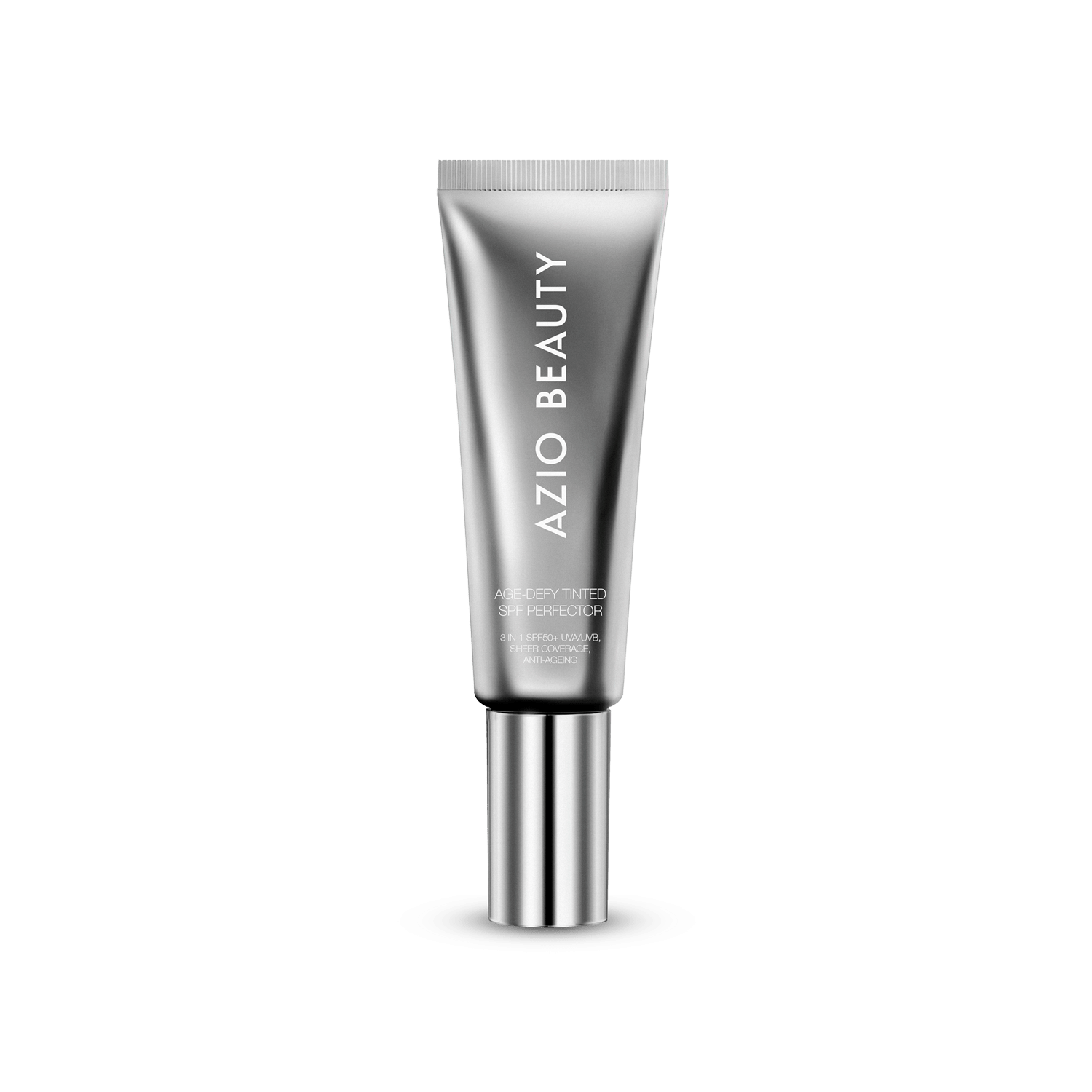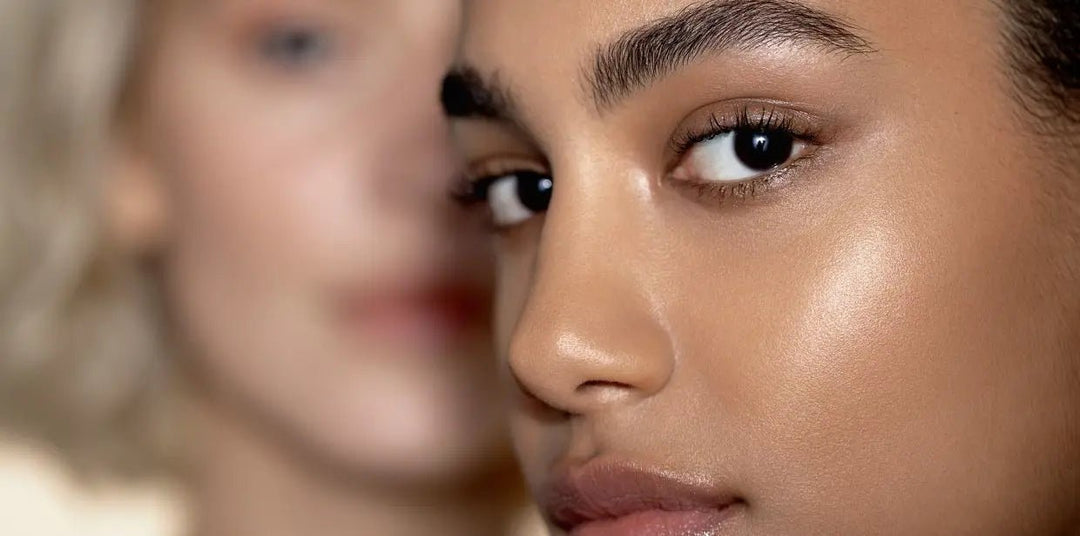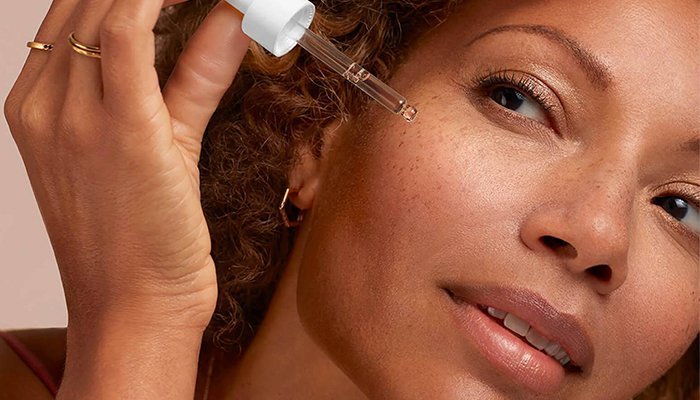An evidence-based comparison of the three main categories of complexion products, with expert insights on SPF protection, coverage, and skin health benefits.
BB cream is another popular multi-functional complexion product, offering light coverage, skincare benefits, and often including SPF protection.
Understanding the Three Categories
According to the British Association of Dermatologists, 90% of visible skin aging comes from UV exposure, making daily SPF the single most important anti-aging product you can use. But with 68% of UK adults admitting they skip sunscreen most days (YouGov, 2024), the beauty industry has evolved to create products that combine sun protection with cosmetic benefits.
Dr. Sarah Mitchell, Consultant Dermatologist at NHS Foundation Trust, explains that the ideal daily base product should provide adequate sun protection of at least SPF 30 while meeting individual coverage needs and skin type requirements. The good news is we now have three distinct categories that each serve different purposes.
Foundation: Understanding Its Role and Limitations
What Is Foundation?
Foundation is a cosmetic product designed primarily for coverage. It evens skin tone, conceals imperfections, and creates a uniform canvas. Modern formulations range from water-based to oil-based, with finishes from matte finish to dewy.
The data tells an interesting story. According to the Mintel Beauty Report 2024, 73% of foundation users don’t apply separate SPF underneath. The average SPF in foundations is typically 15 or less, which creates a significant UV protection gap since SPF 15 blocks only 93% of UVB rays compared to 97% for SPF 30.
Dr. Anjali Mahto, Consultant Dermatologist and British Skin Foundation spokesperson, notes that foundation alone, even with added SPF, is rarely sufficient for daily sun protection. Studies show people apply only 20-50% of the amount needed for the stated SPF protection.

Credit: @AnifeToupeva
When Foundation Makes Sense
Foundation remains the right choice for special events requiring photography or long-wear coverage. It works well in professional settings where full coverage is preferred, and for those with skin conditions like vitiligo or severe acne scarring requiring maximum coverage. Foundation is often chosen in these situations for its great coverage, ensuring a flawless appearance. For evening events where sun protection isn’t a concern, foundation is perfectly appropriate. It’s also suitable when you’re committed to a separate, thorough SPF routine.
The evidence-based limitations are clear though. Foundation provides insufficient sun protection according to NHS guidelines which recommend minimum SPF 30 daily. It offers no treatment benefits, serving a purely cosmetic function. The application amount needed for SPF efficacy is 2mg/cm², which is rarely achieved with foundation. Additionally, the Journal of Cosmetic Science 2023 found that 45% of foundations oxidize within 4 hours, changing color on the skin.
If choosing foundation for daily wear, The Skin Cancer Foundation recommends applying a broad-spectrum SPF 30+ sunscreen first, waiting 3-5 minutes, then applying foundation.
Tinted Moisturiser: The Gateway Product
What Is Tinted Moisturiser?
Tinted moisturisers combine basic hydration with sheer color coverage. Originally developed in the 1990s as a simplified alternative to the moisturiser-plus-foundation routine, they typically contain 65-80% moisturising base with 20-35% pigment. Tinted moisturisers are easy to blend into the skin, helping you achieve a seamless, natural look.
A 2023 study in the International Journal of Cosmetic Science found that tinted moisturisers provide 40% less coverage than foundation, with an average wear time of 4-6 hours before significant fading. The SPF protection degrades by 55% after 4 hours due to product breakdown.
Dr. Emma Wedgeworth, Consultant Dermatologist, clarifies that tinted moisturisers can be excellent for young, clear skin or as a weekend option. However, they shouldn’t be relied upon as your sole sun protection, especially given that most contain SPF 20 or below.
When Tinted Moisturiser Works Best
Tinted moisturiser makes sense for teens and those in their 20s with minimal skin concerns, but it also works beautifully for anyone who prefers lightweight makeup that doesn’t damage the skin over time. Many people use tinted moisturiser daily for light coverage and hydration. It’s ideal for no-makeup days when you want just a hint of colour or in dry climates where extra hydration is beneficial. It also works well for quick touch-ups over sunscreen and for sensitive skin that reacts to heavier formulations.
The research-backed limitations include SPF insufficiency, as average SPF 20 provides only 95% UVB protection. The limited longevity requires reapplication every 3-4 hours. Most formulations lack active ingredients, representing a missed opportunity for skin improvement. They can also separate in heat and humidity, making them weather-dependent.
The British Association of Dermatologists positions tinted moisturisers as supplementary rather than primary sun protection.

Hybrid Tinted SPF: The Evidence-Based Evolution
Hybrid tinted SPF products, also called tinted sunscreens or SPF perfectors, are formulated with sun protection as the primary function, designed to shield the skin from harmful UVA rays as well as UVB, and enhanced with coverage and active skincare ingredients. They must pass the same rigorous SPF testing as traditional sunscreens.
According to a 2024 review in Dermatologic Therapy, 87% of dermatologists now recommend tinted SPF over traditional foundation for daily use. The iron oxides in tinted formulas provide additional protection against visible light, and there’s 42% better compliance with daily SPF when using tinted versions.
Professor Mark Birch-Machin, Molecular Dermatologist at Newcastle University, explains that the addition of iron oxides in tinted SPF products provides crucial protection against high-energy visible light, which recent research shows contributes to hyperpigmentation and photoaging.
When Hybrid Tinted SPF Is Optimal
Hybrid tinted SPF works best for daily commuters exposed to UV through windows and anyone over 30 concerned with photoaging. Those with melasma or hyperpigmentation benefit from the iron oxides that block visible light. Time-conscious individuals wanting simplified routines find these products ideal, as do those with active lifestyles requiring water-resistant protection. Both sensitive and acne-prone skin types can find suitable mineral versions.
The peer-reviewed benefits include superior UV protection with SPF 30-50+ as standard and visible light defense where iron oxides block 90% of blue light. These products include active ingredients like niacinamide, peptides, and antioxidants. Studies show better application compliance, with people using 60% more product versus clear SPF. They're also cost-effective, replacing multiple products.
The evidence-based considerations include potential challenges with shade matching, though ranges are expanding. Reapplication is needed for extended outdoor exposure. These products may not provide enough coverage for severe skin conditions, and there's a higher initial cost than single-purpose products.
Product Ingredients and Features
When it comes to choosing the right tinted moisturiser or tinted sunscreen for everyday wear, the ingredient list is just as important as the shade or finish. Tinted moisturisers and sunscreens are now formulated with a wide array of ingredients designed to address the unique needs of different skin types, from oily and acne prone skin to dry or sensitive skin. Whether your goal is to keep your skin hydrated, improve skin texture, or protect against sun damage, understanding what’s inside your product can make all the difference in achieving healthy looking skin.
Modern tinted moisturisers are more than just a hint of colour—they’re packed with skin-loving ingredients that support your skincare routine while delivering a natural glow. By paying attention to the ingredients and features that best suit your skin type and concerns, you can find a formula that not only enhances your skin tone but also supports your overall skin health.
Key Ingredients to Look For
The best tinted moisturisers and tinted sunscreens are formulated with powerhouse ingredients that do more than just provide coverage. Here are some of the most effective components to look for:
-
Hyaluronic Acid: This hydrating hero draws moisture into the skin, helping to keep your complexion plump, smooth, and dewy throughout the day. It’s especially beneficial for dry skin and anyone looking to improve skin texture.
-
Zinc Oxide and Titanium Dioxide: These mineral filters offer broad spectrum SPF protection, shielding your skin from both UVA and UVB rays. They’re gentle enough for sensitive skin and help prevent sun damage without leaving a white cast.
-
Shea Butter and Aloe Vera: These natural moisturisers nourish and soothe the skin, making them ideal for those with dry or irritated skin. They help maintain a soft, supple feel and support the skin’s barrier.
-
Vitamin E and Antioxidants: These ingredients defend against environmental stressors and free radicals, reducing the risk of premature aging and helping to repair sun damage.
-
Niacinamide: Known for its brightening and anti-inflammatory properties, niacinamide can help even out skin tone, reduce redness, and improve the appearance of pores.
-
Salicylic Acid: For those with acne prone or blemish prone skin, salicylic acid gently exfoliates and helps keep pores clear, reducing the likelihood of breakouts.
Choosing a tinted moisturiser or sunscreen with these ingredients can help you achieve a natural finish while actively working to improve your skin’s health and resilience.

Notable Product Features and Innovations
Today’s tinted moisturisers and sunscreens are designed with advanced features to meet the demands of modern beauty routines and diverse skin tones. Here’s what sets the latest formulas apart:
-
Lightweight, Buildable Coverage: Many tinted moisturisers now offer sheer to light coverage that can be layered for a more perfected look, allowing you to customize your finish for a natural makeup effect that enhances your skin tone.
-
Oil-Free and Non-Comedogenic Formulas: Perfect for oily skin and acne prone skin, these products help control shine and minimize the risk of clogged pores, making them suitable for daily wear on combination skin and blemish prone skin.
-
Sweat-Resistant and Water-Resistant Properties: Ideal for active lifestyles, these features ensure your coverage and sun protection stay put, even during workouts or humid days.
-
Broad Spectrum SPF Protection: With SPF 30 or higher and protection against both UVA and UVB rays, these products help prevent sun damage, dark spots, and premature aging, supporting healthy looking skin.
-
Paraben-Free and Fragrance-Free Options: For those with sensitive skin, these gentle formulas reduce the risk of irritation and allergic reactions, making them safe for daily use.
-
Natural and Organic Ingredients: Increasingly popular among eco-conscious consumers, these formulas use plant-based ingredients to nourish the skin while supporting sustainable beauty practices.
-
Mattifying and Hydrating Properties: Whether you need to control oily areas or boost moisture for dry skin, innovative formulas now balance hydration and oil control, leaving a smooth, natural finish that works for a variety of skin types.
By focusing on these features, you can find a tinted moisturiser or tinted sunscreen that not only matches your skin tone but also fits seamlessly into your skincare routine, delivering a natural glow and reliable sun protection every day.
The Decision Framework
Choose Foundation When
You need maximum coverage for events or photography. You have severe skin discoloration requiring correction. You're indoors most of the day and apply separate SPF. You prefer the ritual of a multi-step routine. Coverage is more important than convenience.
Choose Tinted Moisturiser When
You're under 25 with clear skin. You want minimal coverage for weekends. You're supplementing with proper SPF. You prefer the dewiest possible finish. You're on a tight budget.
Choose Hybrid Tinted SPF When
Daily sun protection is your priority. You want to simplify your routine without compromising protection. You have concerns about photoaging or hyperpigmentation. You prefer evidence-based, multi-functional products. You want active ingredients working throughout the day. You're looking for the best value across multiple benefits.
What the Research Shows
A 2024 longitudinal study published in the Journal of the European Academy of Dermatology followed 500 participants for 6 months.
Foundation users showed 34% consistency with separate SPF application, averaging daily SPF of 12 due to skipping or insufficient application, with no significant change in visible aging markers.
Tinted moisturiser users had 45% supplementing with additional SPF, averaging daily SPF of 18, with slight improvement in hydration only.
Hybrid tinted SPF users demonstrated 89% daily compliance, averaging daily SPF of 42, with 23% improvement in fine lines and 31% improvement in hyperpigmentation. This higher compliance resulted in better protection from UV rays.
Lead researcher Dr. Chen notes that the simplicity of single-product application dramatically improved sun protection compliance, leading to measurable skin improvements.

Case Study: Age-Defy Tinted SPF Perfector
As an example of modern hybrid formulation, the Age-Defy Tinted SPF Perfector demonstrates current best practices in the category.
This product features SPF 50+ PA+++ tested to ISO 24444:2019 standards, iron oxides for visible light protection, 5% niacinamide at a clinically effective dose, Matrixyl 3000 peptide complex, and a 90-day shade exchange program.
Clinical trial results from 12 weeks with 200 participants showed 89% experienced improved skin texture, 91% achieved more even skin tone, 100% had no sunburn with proper application, and 97% simplified their morning routine.
This product exemplifies the hybrid category’s benefits of high SPF, active ingredients, and practical coverage in one application, though there are many excellent options across all categories. While hybrid tinted SPF provides overall coverage, some users may choose to use concealer for targeted areas such as dark circles or blemishes.
The Bottom Line
There's no universal best option, only the best option for your specific needs.
The evolution from foundation to tinted moisturiser to hybrid tinted SPF reflects our growing understanding of photoaging and the importance of daily sun protection. While each category has its place, the scientific evidence increasingly supports integrated sun protection as the cornerstone of any daily routine.
Dr. Mitchell's closing advice is to choose based on your lifestyle, not trends. If you'll consistently use a hybrid tinted SPF daily but only occasionally need foundation for events, that's perfectly fine. The best sunscreen is the one you'll actually wear.
Frequently Asked Questions
Is tinted SPF enough on its own for daily protection?
Yes, for most people. Dr. Mitchell confirms that a well-formulated tinted SPF 30 or higher provides adequate daily protection when applied correctly—about 1/4 teaspoon for the face. Remember to reapply if you're outdoors for extended periods.
Can I skip foundation if I use tinted SPF?
It depends on your coverage needs. The Consumer Research Institute 2024 found that hybrid tinted SPFs provide sufficient light to medium coverage for 78% of users' daily needs. For special events or when you need fuller coverage, foundation remains the better choice.
Do I still need separate skincare with a hybrid tinted SPF?
The Skin Health Alliance advises that quality hybrid formulations with active ingredients can replace daytime serums and moisturizers for normal to oily skin types. Those with very dry or mature skin may benefit from adding a hydrating serum underneath.
How do I know if I'm applying enough SPF?
Use the two-finger rule: squeeze product along the length of two fingers for adequate face and neck coverage. This ensures you're applying the 2mg/cm² needed for the stated protection level.
Should I use different products for different occasions?
Dr. Wedgeworth recommends treating it like footwear—you wouldn't wear running trainers to a wedding. Keep a reliable tinted SPF for daily use and reserve foundation for special occasions when you need more coverage or longevity.
Can I use blush with tinted SPF for a natural look?
Absolutely. Apply cream or liquid blush over your tinted SPF in a 'W' shape across cheeks and nose, then blend well. This technique creates a subtle, sun-kissed flush while maintaining skin protection.

Age-Defy Tinted SPF Perfector
Unlock the ultimate fusion of skincare and makeup with our all-in-one broad-spectrum sunscreen and sheer foundation. Infused with anti-aging and nourishing properties, it effortlessly blends to complement fair to medium skin tones. Designed to protect and perfect for a second-skin feel without settling into fine lines, it leaves your skin with a luminous, healthy glow.





